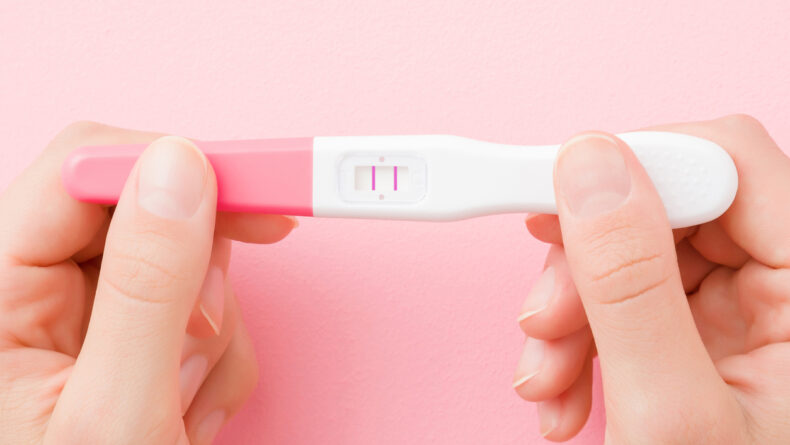10 Pointers For Choosing A Birth Facility In Japan
Tips For Expectant Mothers
10 Savvy tips for choosing the best way and place to give birth in Japan — and stay calm throughout the process.
Approaching the exciting yet daunting task of giving birth in Japan? At a loss as to where to start looking for a birth facility? Here are 10 points to consider.
1. Get onto it early
Depending on where you live, birth facilities can book up lightning-quick. At my local public hospital, I booked in at only 6 weeks pregnant and even then I was cutting it fine; the facility was fully booked until two weeks before my due date.
2. Consider the options

While the vast majority of women in Japan opt for hospital births, there is also the option of giving birth at midwife-run centers or even at home. Your preferred choice might be rare or difficult, depending on where you live, but don’t throw it out until you’ve done the research. If the availability of English-speaking staff is a must for you, the most well-known options in Tokyo are Aiiku Hospital in Minami Azabu and Japan Red Cross in Hiroo.
3. Read others’ experiences
Get an idea of what to expect by reading the many experiences of other women documented around the internet. Make sure to have a read of our article recounting the varied experiences of six women.
4. Come up with your dream birth plan and a list of non-negotiables
You might have very specific desires or maybe you don’t have many preferences as long as there is a healthy baby on the other side of it. Either way, it pays to consider how you would love your birth to go. However, along with your dream outcome, consider what items are absolutely non-negotiable. While hoping for the best, be prepared to make some tradeoffs.
5. Ask lots of specific questions
Japan can be a very foreign place when it comes to giving birth so you might find that there are many things that surprise you. Things that might be a given in any hospital or birth center in the West might be an absolute “no-no” here. For example, some hospitals are notoriously strict about visiting hours (even for the baby’s father and siblings who may not be allowed at all), bringing in outside food, or making the “snip” regardless of the situation and with no negotiation.

So, armed with your birth plan, make sure you ask your doctor or midwife specific questions and request a hospital tour. Take a translator if you need to (if you don’t have a Japanese-speaking friend, your city might offer a volunteer translation service). Given the huge differences in culture and language, it pays to be overly communicative and crystal clear so that there are no misunderstandings resulting in nasty surprises on what is likely to be a very long and dramatic day(s). If you want an epidural, make sure to find out not only whether one is possible, but in what specific circumstances. Pain relief is tightly controlled at some hospitals and I have even heard of one situation where a woman was refused at the height of intense labor despite being previously assured that she could request an epidural at any time. Disappointment epitomized.
Given the huge differences in culture and language, it pays to be overly communicative and crystal clear so that there are no misunderstandings resulting in nasty surprises on what is likely to be a very long and dramatic day(s).
Some of the other biggies you might want to ask about are whether the baby can room-in with you, whether “kangaroo-care” time is allowed, whether you will be allowed to freely move about during labor and whether your husband can be in the delivery room with you. You will also want to consider factors relating to postpartum care such as NICU facilities and assistance with feeding.
6. Have an open mind
While you absolutely shouldn’t feel you have to “settle” for dissatisfactory care, try to have an open mind and be prepared to embrace the Japanese way of doing things where need be. Many women find that they actually appreciate some such aspects despite being adamantly opposed at the outset.
7. Tap into these resources
There are many great blogs and resources out there to help you find out more about giving birth in Japan. Two particularly helpful ones to check out are:
Childbirth Education Center: offers childbirth classes and can help you find a birth facility that matches your preferences.
Tokyo Pregnancy Group: an information-rich community for pregnant women in Tokyo.
8. Consider the cost
Giving birth in Japan can be expensive. Be careful to find out how much your birth will cost and how costs are levied. Costs will depend on a myriad of factors such as the specific care you require, the type of birth you opt for, whether you choose a private room and the duration of your stay at the birth facility. Note that some places require you to stay the full number of days after the birth, while others are more flexible which can reduce the overall cost.
9. Study the lingo
Here are some vocabulary you might want to familiarize yourself with when making inquiries:
| Japanese | Romaji | English |
| 産婦人科 | sanfujinka | obstetrics and gynecology |
| 病院 | byōin | hospital |
| 助産師 | josanshi | midwife |
| 助産院 | josanin | midwifery clinic |
| 会陰切開 | einsekkai | episiotomy |
| 帝王切開 | teiōsekkai | c-section |
| カンガルケアー | kangaru keaー | kangaroo care |
| 訪問時間 | hōmon jikan | visiting hours |
| 立ち会い出産 | tachiai shussan | father present for the birth |
10. Stay positive
While your birth experience might be very different from that in your home country, you can rest assured — Japan is a very supportive and safe place to give birth, and a clear majority of women I’ve spoken to and read about on the topic had a positive experience here. As in many other professions in Japan, most maternity caregivers appear to provide excellent and lovely care. So, if you find yourself stressed out and overwhelmed by the process, take heart: all should be well in the end.
Have you given birth in Japan? What were the most important factors when choosing the hospital to give birth? We would love to hear about your experiences!















